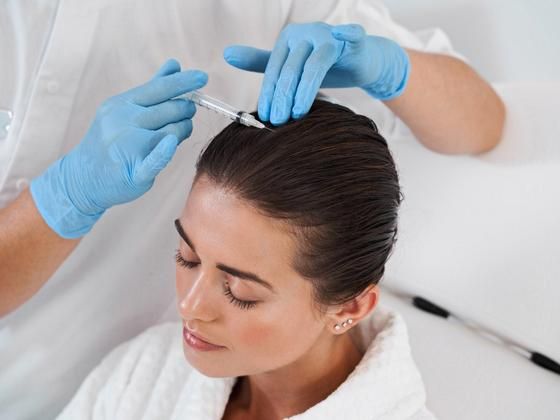Alopecia areata is an autoimmune disorder that causes unpredictable hair loss, often in small, round patches. While the exact cause remains unclear, treatments like PRP hair treatment in Dubai have gained attention for their potential to stimulate hair regrowth. Platelet-rich plasma (PRP) therapy leverages the body’s natural healing mechanisms to encourage follicle revival, making it a promising option for those struggling with this condition.
Alopecia Areata
Alopecia areata occurs when the immune system mistakenly attacks hair follicles, leading to inflammation and subsequent hair loss. The condition can affect any hair-bearing area, though the scalp is most commonly involved. Unlike genetic hair loss, alopecia areata is unpredictable—hair may regrow spontaneously or fall out again without warning.
What Is PRP Hair Treatment?
Platelet-rich plasma (PRP) therapy is a minimally invasive procedure that uses a patient’s own blood to promote healing and tissue regeneration. Blood is drawn, processed to concentrate platelets, and then injected into the scalp. Platelets contain growth factors that play a crucial role in cell repair and regeneration, making them ideal for stimulating dormant hair follicles.

The Science Behind PRP and Hair Growth
PRP works by delivering a high concentration of growth factors directly to the hair follicles. These growth factors—including platelet-derived growth factor (PDGF), vascular endothelial growth factor (VEGF), and transforming growth factor (TGF)—help:
- Reduce inflammation around follicles, a key factor in alopecia areata.
- Stimulate blood circulation to improve nutrient delivery to hair roots.
- Prolong the anagen (growth) phase of the hair cycle, encouraging thicker, stronger strands.
Research suggests that PRP may help counteract the autoimmune response in alopecia areata by modulating immune activity and promoting a healthier follicular environment.
How PRP Treatment Is Performed?
The PRP hair restoration process involves several steps:
Step 1: Blood Collection
A small amount of blood is drawn from the patient’s arm, similar to a routine blood test.
Step 2: Centrifugation
The blood is placed in a centrifuge to separate platelet-rich plasma from other components like red blood cells and plasma.
Step 3: Scalp Preparation
The treatment area is cleaned, and a topical anesthetic may be applied for comfort.
Step 4: PRP Injection
The concentrated PRP is injected into the scalp in areas affected by hair loss. Micro-needling may also be used to enhance absorption.
The entire procedure typically takes 60–90 minutes, with minimal downtime. Patients may experience mild redness or tenderness, which usually subsides within a day.
Effectiveness of PRP for Alopecia Areata
Clinical studies on PRP for alopecia areata show promising but mixed results. Some key findings include:
- A 2015 study published in the Journal of Cutaneous and Aesthetic Surgery found that PRP injections led to significant hair regrowth in alopecia areata patients compared to placebo.
- Another study in Dermatologic Surgery reported improved hair density and thickness after multiple PRP sessions.
However, results vary depending on factors like the extent of hair loss, disease activity, and individual response. PRP appears most effective in early-stage alopecia areata, where follicles are dormant but not permanently damaged.
Combining PRP with Other Therapies
For better outcomes, PRP is sometimes combined with other treatments:
- Corticosteroid Injections – Reduces inflammation while PRP stimulates regrowth.
- Topical Minoxidil – Enhances blood flow to follicles, complementing PRP’s effects.
A dermatologist can recommend the best approach based on the patient’s condition.
Who Is a Good Candidate for PRP?
PRP therapy is suitable for individuals with:
- Mild to moderate alopecia areata (patchy hair loss).
- Stable autoimmune activity (not rapidly progressing).
- Adequate donor hair for extraction (if combined with other procedures).
It may be less effective for those with:
- Complete scalp hair loss (alopecia totalis).
- Long-term, scarring alopecia.
A consultation with a specialist is necessary to assess candidacy.
Potential Side Effects and Considerations
PRP is generally safe since it uses the patient’s own blood, minimizing allergic reactions. Possible side effects include:
- Temporary swelling or bruising at injection sites.
- Mild headache or scalp tenderness.
- Rare risk of infection if proper sterilization isn’t followed.
Patients should avoid blood-thinning medications before treatment to reduce bruising.
What to Expect After PRP Treatment
Results are not immediate—hair regrowth typically begins within 2–6 months. Most patients require 3–6 sessions spaced 4–6 weeks apart for optimal results. Maintenance treatments may be needed every 6–12 months to sustain progress.
Monitoring Progress
Photographic documentation helps track improvements over time. Patients should follow up with their provider to evaluate response and adjust the treatment plan if needed.
Conclusion
PRP hair treatment offers a promising, natural approach to managing alopecia areata by harnessing the body’s regenerative capabilities. While not a cure, it can significantly improve hair density and reduce patchy hair loss in suitable candidates. Consulting a qualified specialist ensures personalized care and realistic expectations.